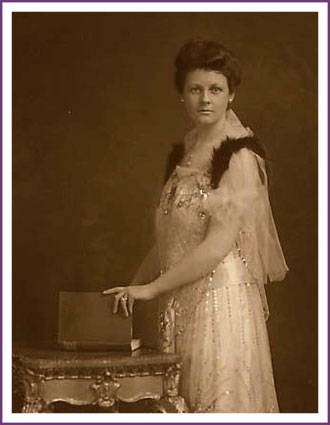JENNIFER (Wainwright) MEARS, "Jane"

• Culture
• Music
Inducted: 2020
Deceased: 1953
JENNIFER (Wainwright) MEARS, "Jane"
Jennifer “Jane” Wainwright Mears (also known as “Jennie” or “Johnnie”), better known as Jane Mears, was a dynamic, energetic pioneer woman. She was prominent in Anchorage’s early history because of her activities on behalf of the original development of Anchorage’s public school system from 1915 to 1923. In 1965, the Anchorage School Board recognized her contribution to public education by naming Mears Junior High School (now Mears Middle School) in her honor.
Mears and her husband Frederick Mears were significant figures in early Anchorage due to her prominence in early civic and community affairs and her husband’s role with the Alaskan Engineering Commission (AEC) and builder of the Alaska Railroad. During the time the Mears family lived in Anchorage, 1915-1923, the AEC built its first two schools in 1915 and 1917. The first school was the Pioneer School House, located originally on Fifth Avenue between F and G Streets.
Mears was the “prime factor” leading to the organization of the Anchorage Woman’s Club, and served as its first president from 1915-1917 and, later, 1921-1922. Meeting in her home, the AWC was organized on September 16, 1915, by a group of thirty-four women who recognized the need to establish a public school. She directed a committee of the Woman’s Club which solicited donations from local businesses to pay for the salaries of the first teachers and other operating costs for the school. With school age children of her own, Mears understood the plight of the Anchorage School Board, which had no funds to educate the children who continued to arrive with the spouses of the workers.
Mears devoted herself to the community and inspired community participation in music and theater, fostering the beginnings of cultural activity in Anchorage.
View Extended Bio